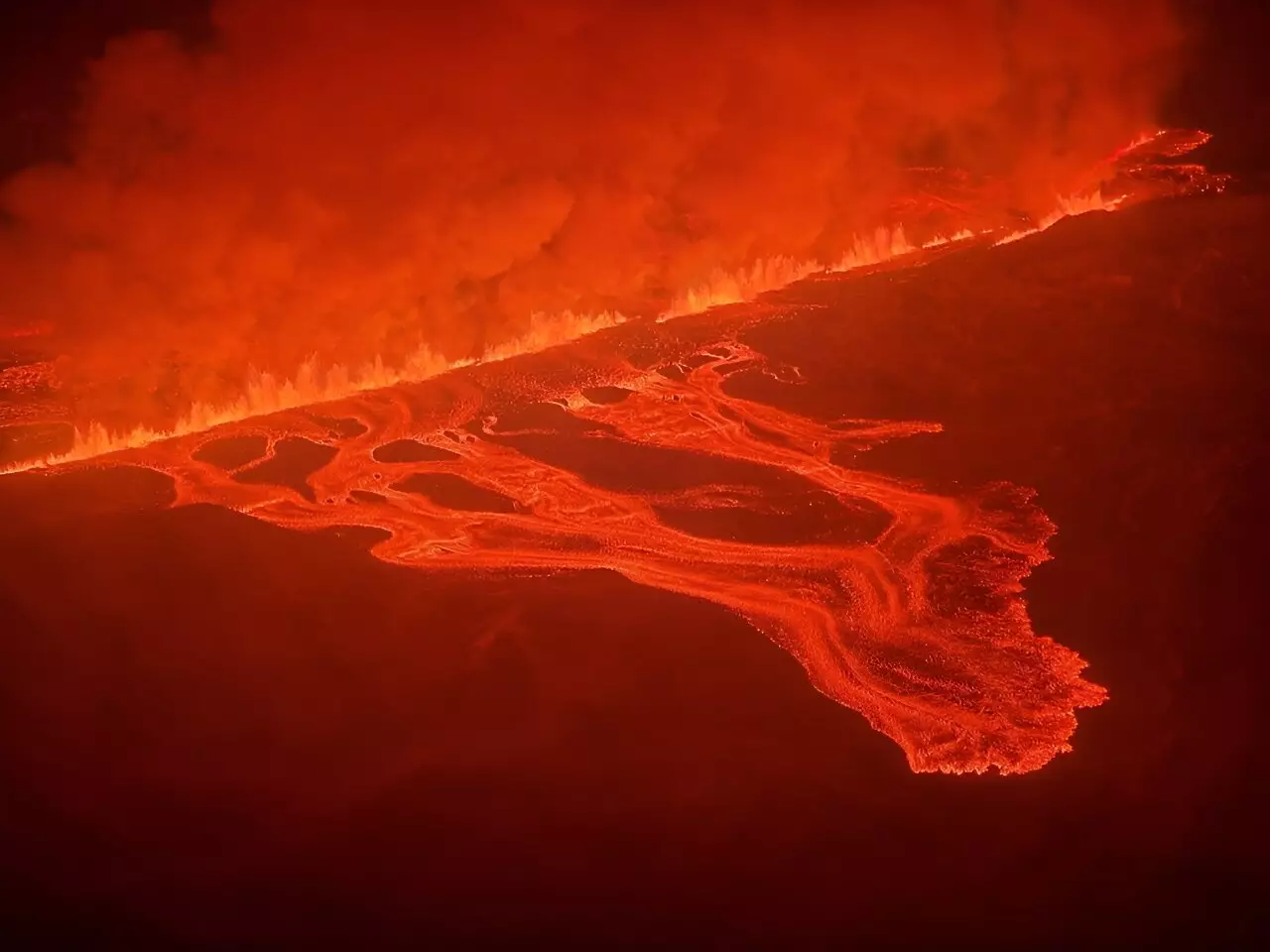Late last year, an astonishing event unfolded in an Icelandic fishing village that had not experienced volcanic activity in over eight centuries. Scientists revealed that a river of magma flowed underneath the village of Grindavik at an unprecedented rate, highlighting a significant awakening of volcanic activity in the region. This eruption was not an isolated incident but rather the third volcanic fissure to hit the western Reykjanes peninsula since December. With lava bursting a key water pipe and authorities declaring a state of emergency, it becomes clear that the consequences of this eruption extend far beyond the geological realm.
Prior to 2021, the peninsula had remained dormant for 800 years, leading experts to believe that the volcanic activity had been lulled into a prolonged slumber. However, the recent volcanic eruptions shattered this belief, causing scientists to reevaluate their understanding of the region’s geological dynamics. Notably, a study published in the journal Science shed light on how magma surged up from an underground reservoir through a long vertical sheet kilometers beneath Grindavik in November. Sadly, this newly discovered activity displays no signs of subsiding, posing months of uncertainty for the threatened region.
The sheer magnitude of the magma flow in November is awe-inspiring. In just six hours, a surging river of magma formed a dyke underground, stretching an impressive 15 kilometers long, four kilometers high, and only a few meters wide. According to the Icelandic Meteorological Office, approximately 6.5 million cubic meters of magma had accumulated below the Grindavik region before Thursday’s eruption. Astonishingly, the magma flow occurred at a rate of 7,400 cubic meters per second, significantly surpassing any measurements ever recorded in Iceland or elsewhere. A comparison to the average flow of the Seine river in Paris, a mere 560 cubic meters per second, highlights the remarkable scale of this event. The flow of magma more closely resembles that of larger rivers like the Danube or Yukon. Additionally, the November magma flow was 100 times greater than previous eruptions on the peninsula from 2021 to 2023, indicating that the volcanic activity is intensifying.
The consequences of this volcanic awakening extend far beyond the lava that has captured our attention. Increasing underground pressure has caused hundreds of earthquakes, gradually pushing the ground upwards by a few millimeters each day. These shifts in the Earth’s crust have resulted in extensive cracks appearing throughout Grindavik and its surroundings, compromising infrastructure and threatening the safety of residents. Surprisingly, the hidden crevasses that have riddled the town pose a greater danger than the lava itself. One shocking discovery was made in the middle of a sports pitch earlier this week, adding to the growing concern. As a result, the village, as well as the nearby Svartsengi power plant and the famous Blue Lagoon geothermal spa, have faced repeated evacuations due to ongoing eruption threats. This raises questions about the long-term viability of areas situated on such volatile ground, sparking debates and discussions regarding the future of Grindavik and the surrounding region.
To understand the driving forces behind this unprecedented eruption, researchers employed seismic measurements and satellite data. Iceland, located on the Mid-Atlantic Ridge, experiences the consequences of the Eurasian and North American tectonic plates slowly drifting apart. Over the course of eight centuries, this gradual movement has fostered “tectonic stress,” which played a vital role in propelling magma through the subterranean geological cracks. While scientists continue to study this complex system, their findings offer insights that could aid in understanding eruptions in other parts of the world.
As the Icelandic fishing village of Grindavik grapples with the continuous threat of volcanic eruptions, it is evident that the future remains uncertain. Lead study author Freysteinn Sigmundsson acknowledges the difficulty in predicting the duration of this new era of eruptions but warns that the region may face months of instability. “We need to be prepared for a lot more magma to come to the surface,” cautions Sigmundsson. While decisions regarding the long-term safety of the town ultimately lie in the hands of local authorities, the present reality necessitates preparedness and vigilance.
The relentless volcanic activity beneath Grindavik serves as a stark reminder of the unpredictable and ever-changing nature of our planet. With a river of magma flowing at unprecedented rates, earthquakes shaking the ground, and infrastructure crumbling, the consequences of this awakening go beyond what meets the eye. The scientific community continues to study and analyze this phenomenon, hoping to gain a deeper understanding of the driving forces behind volcanic eruptions. Through their efforts, we may inch closer to unlocking the secrets of our dynamic Earth and better prepare for the uncertainties that lie ahead.


Leave a Reply